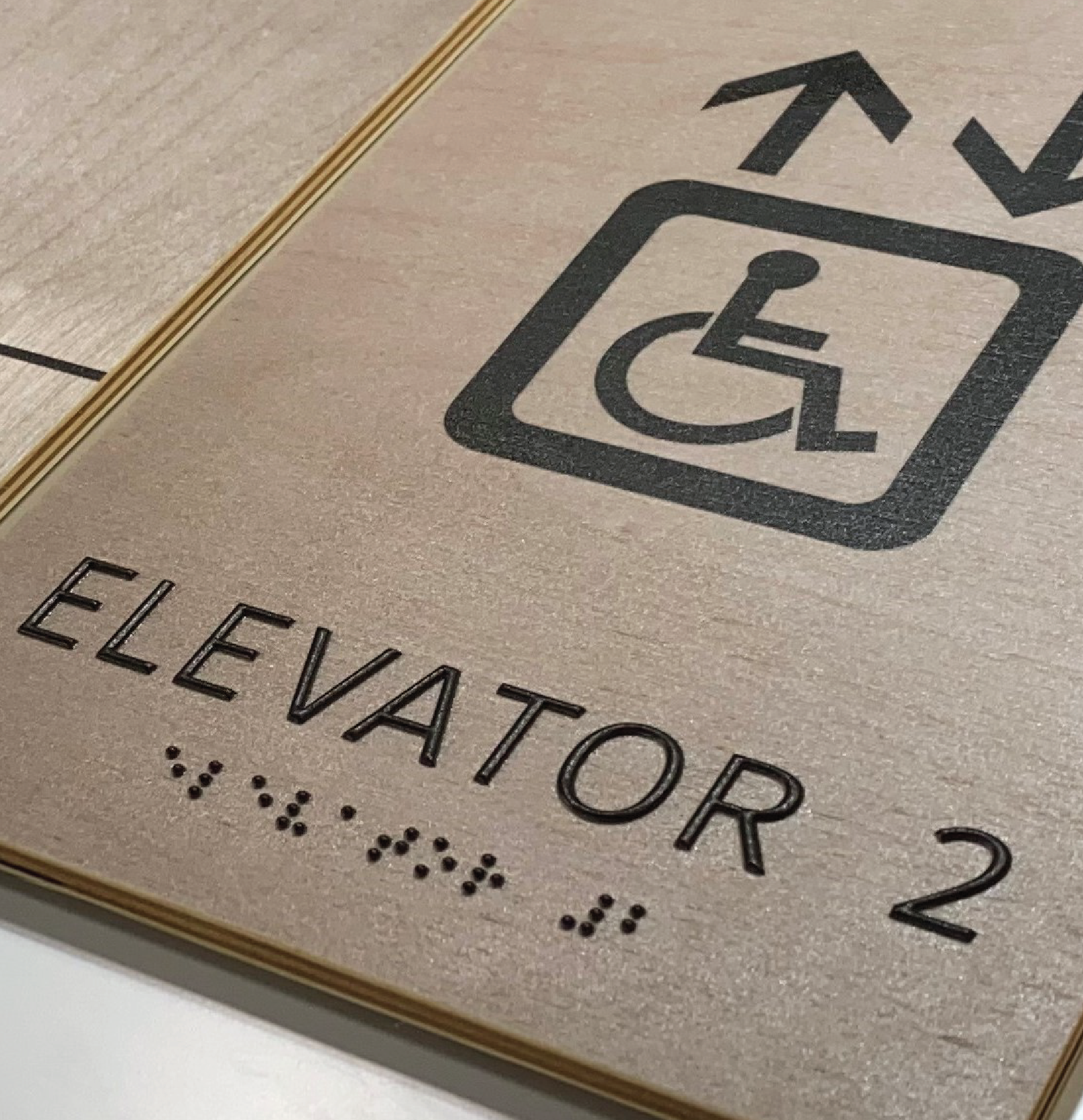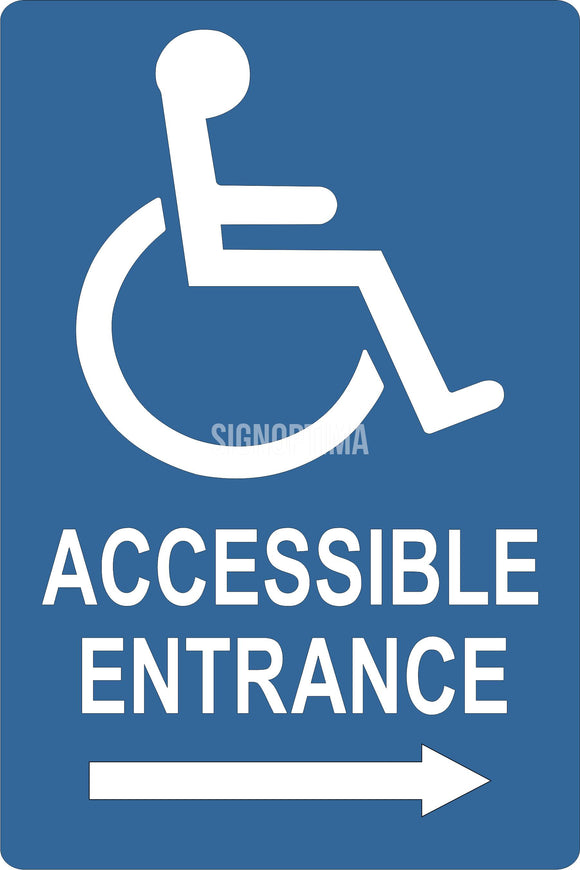Personalizing ADA Signs to Satisfy Your Certain Needs
Personalizing ADA Signs to Satisfy Your Certain Needs
Blog Article
Exploring the Trick Functions of ADA Indications for Enhanced Availability
In the realm of accessibility, ADA signs work as quiet yet powerful allies, making sure that areas are comprehensive and navigable for people with disabilities. By incorporating Braille and tactile elements, these indications damage barriers for the visually damaged, while high-contrast color schemes and legible typefaces accommodate diverse aesthetic demands. Additionally, their strategic positioning is not approximate but rather a calculated initiative to facilitate smooth navigating. Past these features exists a deeper story concerning the evolution of inclusivity and the recurring dedication to developing equitable rooms. What much more could these indications signify in our quest of global ease of access?
Value of ADA Compliance
Making sure conformity with the Americans with Disabilities Act (ADA) is vital for cultivating inclusivity and equal gain access to in public rooms and work environments. The ADA, enacted in 1990, mandates that all public facilities, employers, and transport solutions fit individuals with specials needs, ensuring they take pleasure in the exact same civil liberties and possibilities as others. Compliance with ADA requirements not just fulfills legal commitments however additionally boosts an organization's track record by demonstrating its dedication to diversity and inclusivity.
One of the vital aspects of ADA conformity is the application of available signs. ADA indications are designed to ensure that individuals with handicaps can quickly browse through spaces and buildings.
Additionally, adhering to ADA laws can mitigate the threat of legal repercussions and prospective penalties. Organizations that fall short to adhere to ADA guidelines might face legal actions or penalties, which can be both damaging and financially burdensome to their public picture. Thus, ADA conformity is integral to promoting an equitable environment for everyone.
Braille and Tactile Aspects
The incorporation of Braille and responsive components right into ADA signage personifies the principles of availability and inclusivity. These attributes are vital for individuals who are visually damaged or blind, allowing them to navigate public areas with greater freedom and confidence. Braille, a tactile writing system, is essential in offering created info in a layout that can be easily viewed with touch. It is commonly placed below the matching message on signs to make certain that individuals can access the details without aesthetic support.
Tactile aspects prolong beyond Braille and include raised icons and personalities. These elements are created to be discernible by touch, allowing individuals to recognize area numbers, toilets, leaves, and various other vital areas. The ADA sets details standards pertaining to the dimension, spacing, and positioning of these tactile elements to maximize readability and make certain consistency across various atmospheres.

High-Contrast Color Pattern
High-contrast color design play a pivotal function in boosting the exposure and readability of ADA signage for people with visual problems. These plans are vital as they take full advantage of the difference in light reflectance in between text and background, guaranteeing that indicators are quickly noticeable, even from a range. The Americans with Disabilities Act (ADA) mandates my explanation making use of particular color contrasts to fit those with limited vision, making it a crucial facet of compliance.
The efficacy of high-contrast colors depends on their capability to attract attention in different lighting conditions, consisting of dimly lit atmospheres and locations with glow. Normally, dark text on a light background or light message on a dark history is used to accomplish optimum contrast. For circumstances, black message on a white or yellow background supplies a raw visual difference that helps in fast recognition and comprehension.

Legible Fonts and Text Size
When thinking about the layout of ADA signage, the selection of clear font styles and ideal message dimension can not be overstated. These aspects are critical for ensuring that signs come to individuals with visual disabilities. The Americans with Disabilities Act (ADA) mandates that font styles need to be not italic and sans-serif, oblique, manuscript, very attractive, or of unusual form. These needs aid guarantee that the text is easily readable from a range and that the characters are appreciable to diverse audiences.
According to ADA guidelines, the minimum message height must be 5/8 inch, and it should raise proportionally with seeing distance. Uniformity in message size adds to a cohesive visual experience, assisting individuals in browsing environments successfully.
In addition, spacing between letters and lines is indispensable to clarity. Adequate spacing stops characters from showing up crowded, improving readability. By sticking to these standards, developers can considerably boost availability, guaranteeing that signs serves its designated objective for all individuals, despite their visual capabilities.
Efficient Positioning Strategies
Strategic placement of ADA signage is necessary for making the most of access and making certain compliance with lawful criteria. ADA standards state that indications ought to be mounted at a height between 48 to 60 inches from the ground to ensure they are within the line of view for both standing and seated people.
Additionally, indicators need to be placed adjacent to the lock side of doors to enable very easy identification prior to entrance. Consistency in indicator placement throughout a center improves predictability, reducing complication and improving total individual experience.

Final Thought
ADA signs play an essential role in advertising accessibility by integrating functions that address the requirements of people with disabilities. Integrating Braille and responsive components ensures essential details comes to the aesthetically damaged, while high-contrast color pattern and understandable sans-serif fonts enhance visibility throughout numerous lights conditions. Reliable placement techniques, such as suitable mounting heights and tactical locations, even more assist in navigating. These components jointly foster a comprehensive environment, underscoring the significance of ADA compliance in making sure equivalent access for all.
In the world of access, ADA indicators offer as silent yet powerful allies, making certain that rooms are navigable and inclusive for people with specials needs. The ADA, passed in 1990, mandates that all public facilities, employers, and transportation solutions suit individuals with impairments, guaranteeing they appreciate the same their explanation rights and opportunities as others. ADA Signs. ADA indications are developed to guarantee that people with handicaps can easily browse via structures and rooms. ADA standards state that signs need to be placed at a height in between 48 to 60 inches from the ground to ensure they are within the line of sight for both standing and seated people.ADA signs play a vital function in promoting accessibility by integrating functions that address the requirements of individuals with impairments
Report this page